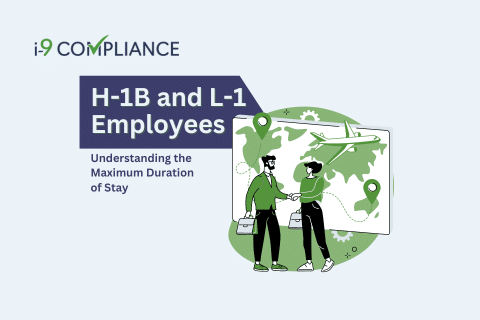Understanding the Maximum Duration of Stay for H-1B and L-1 Employees

June 12, 2023
Businesses hiring foreign national workers must understand the maximum periods of stay for their workers. This knowledge has proven crucial for employees with H-1B or L-1 statuses, allowing them to remain and work in the U.S. temporarily.
Individuals who reach the end of their temporary stay must leave the United States if not extended. However, employers can extend this stay by filing for extensions or beginning the employment-based green card application for the employee. Employers should keep track of when employees approach the end of their stay. This vigilance ensures they avoid potential issues with employment eligibility, preventing an unexpected loss of workers.
The H-1, L-1A, and L-1B visas each offer different maximum periods of stay. H-1B allows up to six years, L-1A seven, and L-1B maxes out at five years. These periods include all time spent residing in the U.S. under the status. This time also counts when individuals change their status between H and L.
This time will reset for individuals staying in the U.S. intermittently and residing outside the country for at least a year. In addition, employers may file for an extension to request that the employee’s maximum stay include the time spent outside the United States. However, they must file this before the employee’s maximum stay period.
Employers with workers through the H-1B status will find they have several extension methods. For example, employers could start the employment-based lawful permanent resident process to keep the worker longer. However, L-1 workers do not have this option. L-1 workers who reach the end of their stay become ineligible for the same status. They can regain eligibility after living outside the U.S. for at least a year.
This same practice applies to H-1B status, which could reset if the visa holder resides in another country without interruption for one year. Employees may also attempt to extend their stay beyond the maximum if their employer files an Application for Permanent Employment Certification (PERM) or an I-140 Immigrant Petition. Employers with approved I-140 Immigrant Petitions can request three-year extensions for H-1B employees.
Extending L-1 status by applying for an employment-based green card is not easy. L-1 visa holders must acquire an employment-based green card before they reach their maximum stay in the United States. This timing allows them to stay and continue their employment without interruption.
Employers should remember that these employees must still complete the employment eligibility verification (Form I-9) process. Unfortunately, this process has proven complicated due to the many documents foreign national workers may present. The easiest way to ensure correctly completed forms is by using an electronic I-9 management system. This system guides employers through the entire process, securely stores the documents, and sends alerts when needed to maintain compliance.
Increase your hiring and verification efficiency today with I-9 Compliance automation.